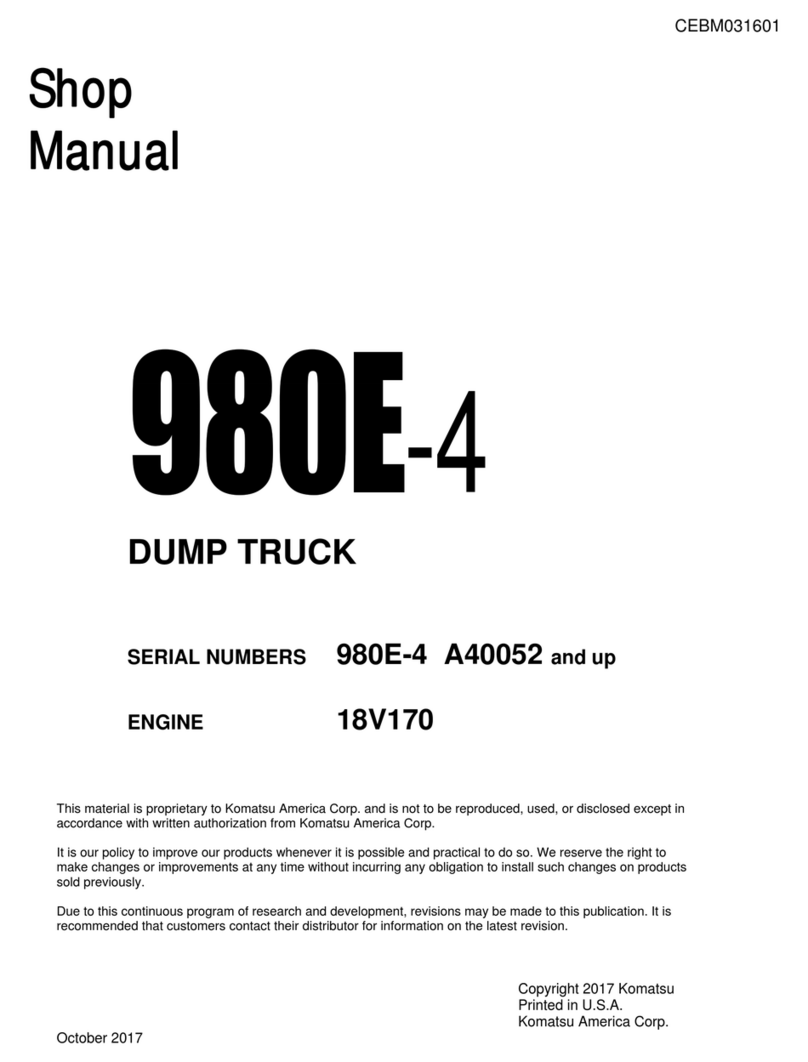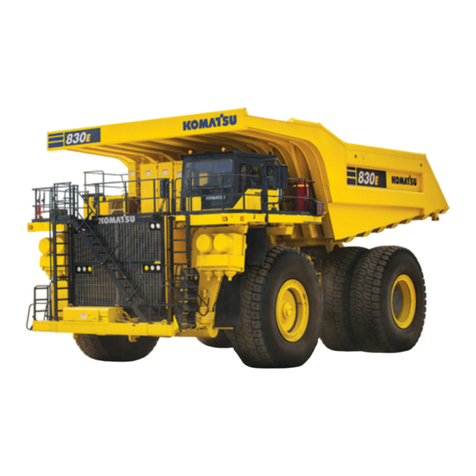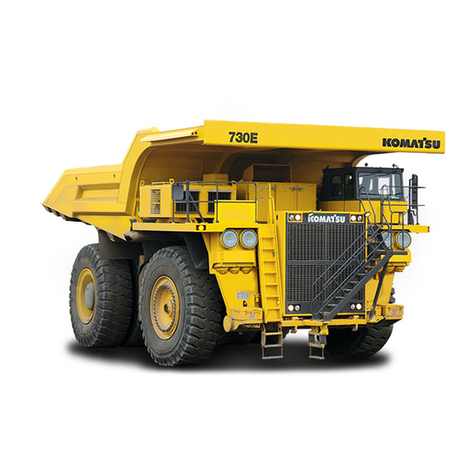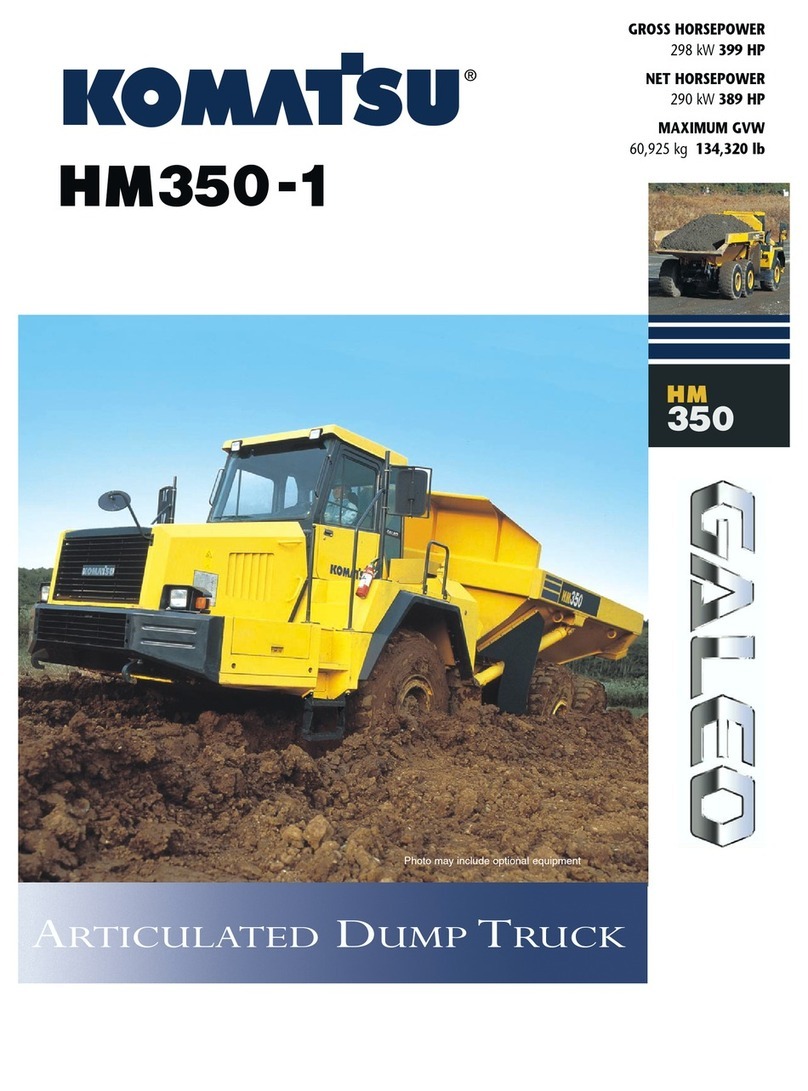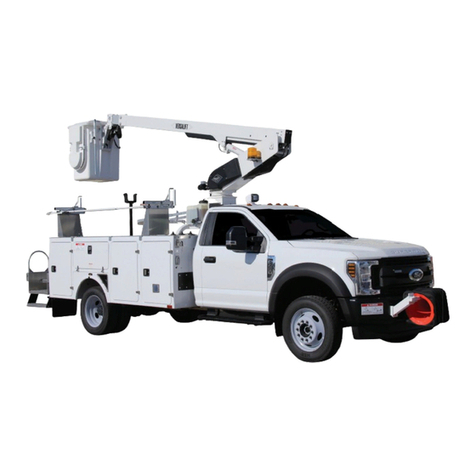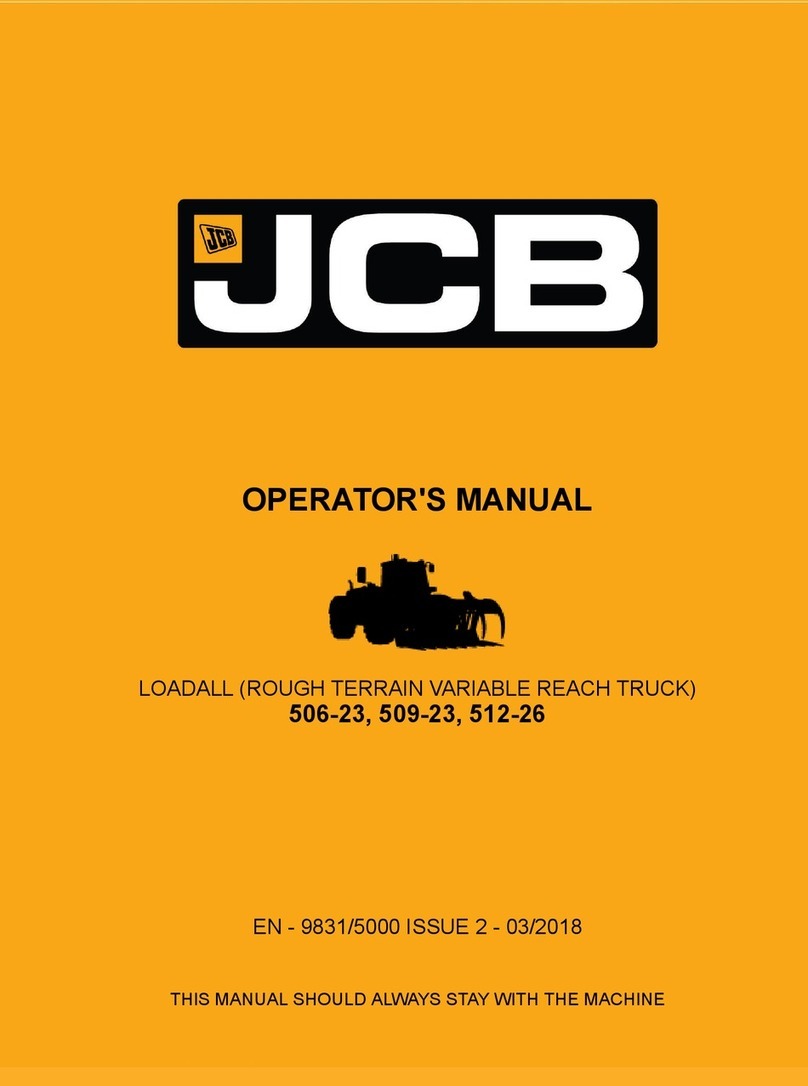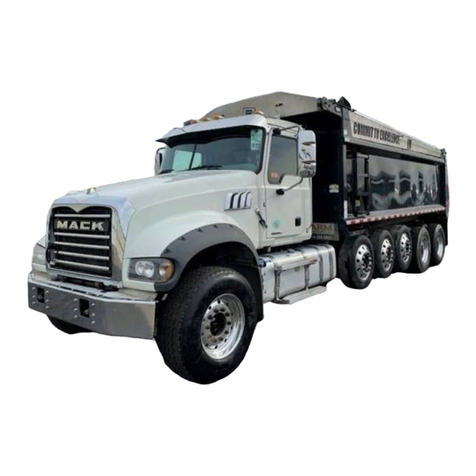
COMPONENT DESCRIPTION AND SPECIFICATIONS
ENGINE
The 210M HAULPAK®Truck is powered by
a Cummins KTTA--19C diesel engine. It is
capableofspeedsup to 35MPH(56.7km/h).
TRANSMISSION
The diesel engine drives a remote-mounted
Allison CLT-6063 transmission incorporating
a TC683 torque converter. The transmission
has six "Forward" speeds and two "Reverse"
speeds and uses Allison Transmission Elec-
tronicControl(ATEC)forcompleteautomatic
shift sequencing.
The operator may select "R1" or "R2" for
Reverse, "N" for Neutral, or any one of the six
Forward driving ranges by using the Trans-
mission Range Selector. Each position (R2,
R1, N, D, 5, 4, 3, 2, 1) is selected by releasing
a range locking mechanism on the lever and
choosing the desired range. "D" will permit
completely automatic up and down shifts
through all six ranges. "5" will limit upshifts to
5th range only. "4" will limit upshifts to 4th
range only. "3" will limit upshifts to 3rd range
only. "2" will limit upshifts to 2nd range only.
"1" is a first range hold position and no up-
shifts are permitted.
"R1"or "R2"REVERSE position is used to
back the truck. "R1"position should be used
for normal reverse operation. This range se-
lection utilizes the standard 5.12:1 gear re-
duction ratio. "R2"position may be used for
job operations that would benefit from a
higher speed reverse operation. This range
selection utilizes a 3.43:1 gear reduction ra-
tio.
FINAL DRIVE
The Planetary Final Drive has full floating axle
shaftsandaplug-indifferentialcarrierassem-
bly.
SERVICE BRAKE SYSTEM
The service brakes are controlled by an all
hydraulic actuation system. Depressing the
service brake pedal actuates front dry disc
brakes and rear wet disc brakes.
Automatic Emergency Braking is provided if
system pressure falls below a preset value.
All functioning wheel brakes will be automat-
ically applied by accumulators.
DYNAMIC RETARDING
Dynamic retarding is actuated by depressing
the operator’s retarder pedal which applies
oil-cooled, rear mounted, wet disc brakes
only; the front brakes are not applied.
Application of the retarder pedal may be fully
modulated and should be used to slow the
truck during normal truck operation, to con-
trol speed coming down a grade or to make
non-emergency stops. Use of the retarder
pedal saves wear on the front brakes and
provides better steering control.
POWER STEERING
The HAULPAK®Truck is equipped with an
orbital power steering system mounted un-
der the cab floor with noise and vibration
isolators. An accumulator automatically pro-
vides emergency power to safely steer the
truck while stopping.
INSTRUMENTS
The cab instrument panel displays for the
operator all switches and gauges which are
necessary to safely control the truck and
monitor the truck’s operating systems.
SUSPENSION
HYDRAIR®IIsuspensioncylinderslocatedat
each wheel provide a smooth and comfort-
able ride for the operator and dampens
shock loads to the chassis during loading.
HB1042 Component Description and Specifications HB1-1







